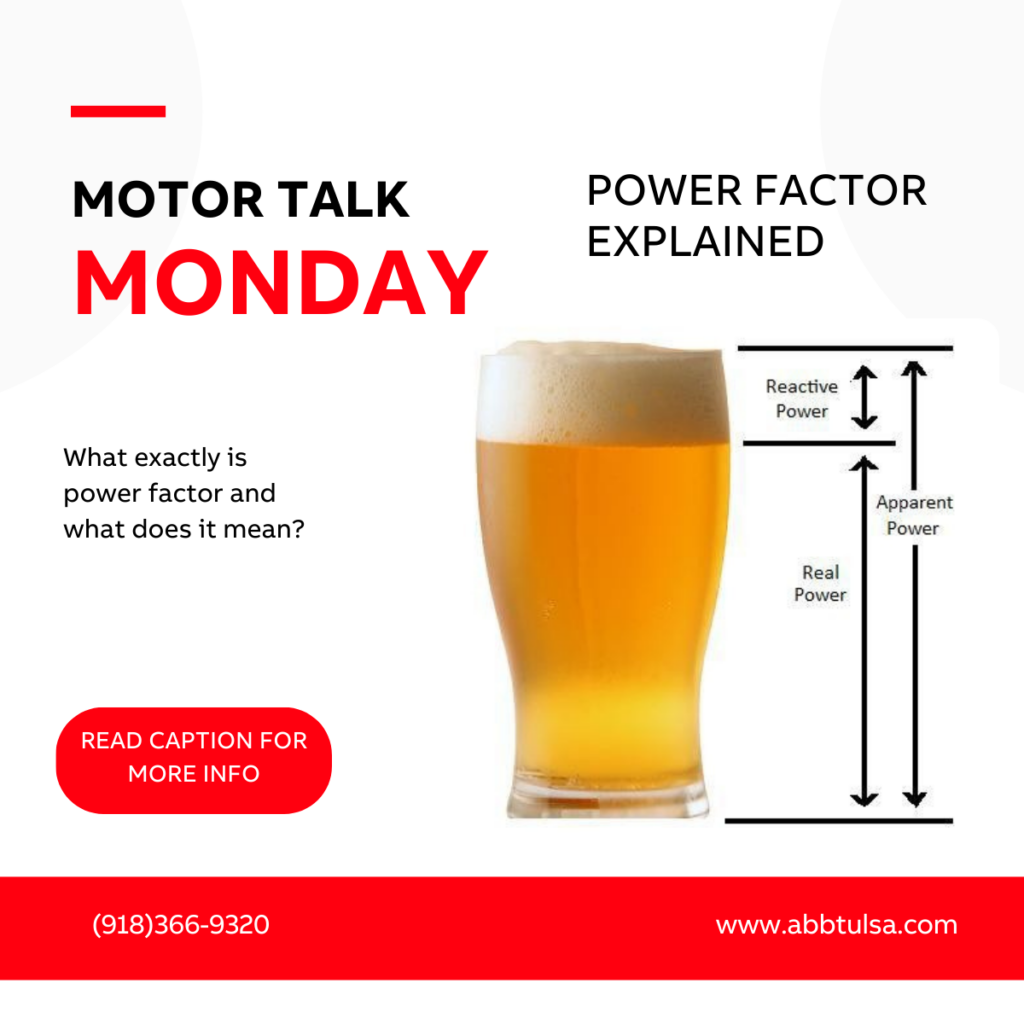
#MotorTalkMonday – power factor explained
Power factor is a measure of a motor’s requirements for magnetizing amperage. So, what does that mean? It’s the extra, unused, wasted power.
Think of it this way, power factor is like the foam on a glass of beer (or pop). Here is a classic analogy using beer that will help you to better understand power factor…
Imagine you have a freshly poured glass of your favorite beer sitting in front of you. The drinkable portion is Real Power (kw or hp). This is what powers electrical equipment and performs useful work (in this case, quenching your thirst).
Along with your freshly – poured beer comes some unuseful foam, consider this undrinkable portion of your beer to be Reactive Power, represented by KVAR. This is the power that magnetic equipment like transformers, motors and relays need to produce their magnetizing flux. Think of the foam as a reaction from pouring the beer.
The combination of drinkable beer (kW or HP) and foam (kVAR) inside of your glass represents the Apparent Power, or KVA.
Power Factor is simply the ratio of Real Power (kW or HP) to Apparent Power (kVA) and is represented by the following formula: PF = KW or HP / KVA. Using the beer analogy: PF = Beer / Drinkable Beer + Foam.
For any given KVA, the more foam you have (the higher the percentage of kVAR), the lower your ratio of kW (beer) to KVA (drinkable beer + foam). Thus, the lower your power factor. The less foam you have (the lower the percentage of kVAR), the higher the ratio of kW (drinkable beer) to KVA (drinkable beer plus foam). As your foam (or kVAR) approaches zero, the power factor approaches 1.
Check out the link in the comments below to learn more about Power Factor and why it matters!

